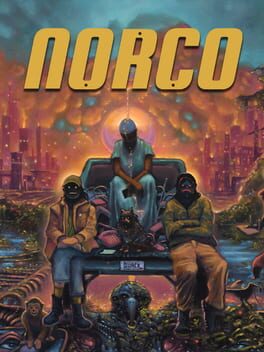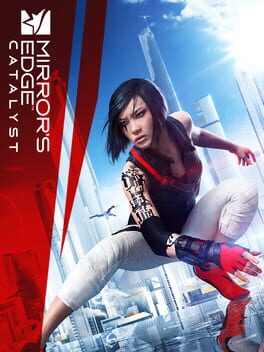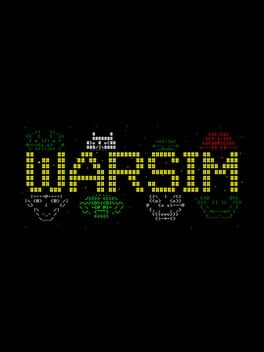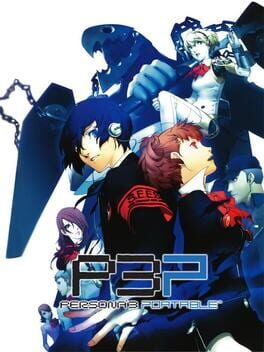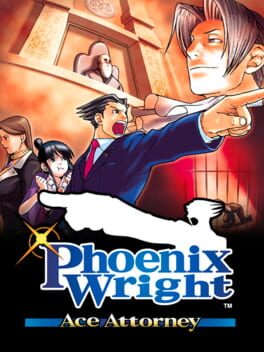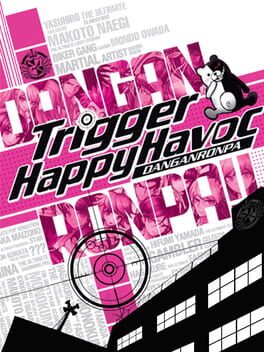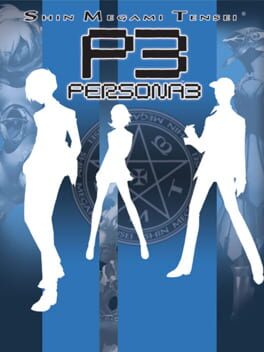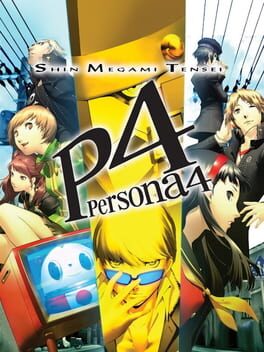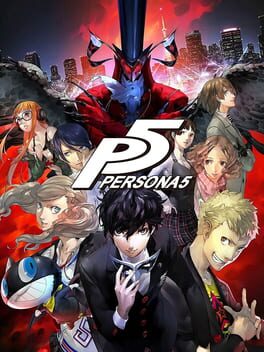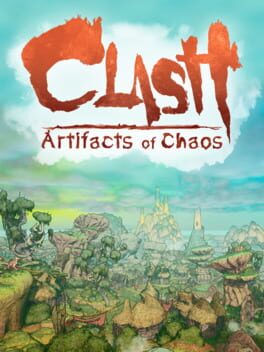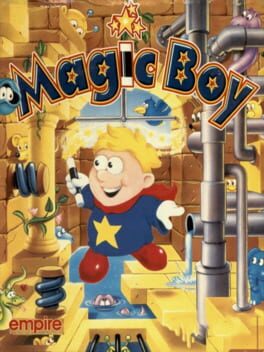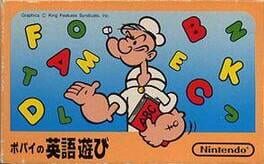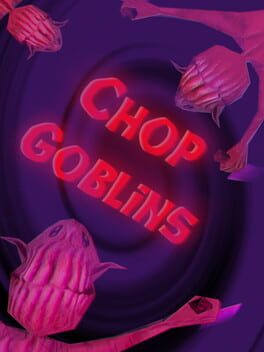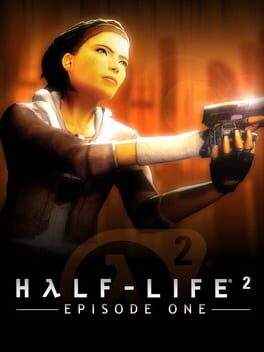BrightCircuit
BACKER
114 reviews liked by BrightCircuit
Buckshot Roulette
2023
Buckshot Roulette really respects your time - once you load into it and kick down two doors, you're already introduced to the unnamed dealer, who's gonna be your enemy in a game of life and death. The core mechanics are simple, you just have to shoot the dealer with live rounds or shoot yourself with blanks in order to get extra turns, so you can deplete the opposing health bar and win a round. After the first round, random items are introduced, which can give you advantages, like being able to see the current bullet or deal double damage for a turn, but the dealer is also able to use his items against you! After you beat the third and final round, you're already done with Buckshot Roulette, no strings attached.
I really appreciate how simple this game is kept and that there is no "hidden lore" or anything at all, it's just a cool concept packaged into a 3€ game and is all about the gameplay. You also unlock an endless mode after beating a normal run, where you can just play more for the sake of it, or try your luck for a bunch of achievements - in my opinion it's a good inclusion, so you get some more bang for your buck(shot).
In conclusion, if you're interested in this game, go for it! It might not be long, but the experience is definitely an unique one.
I really appreciate how simple this game is kept and that there is no "hidden lore" or anything at all, it's just a cool concept packaged into a 3€ game and is all about the gameplay. You also unlock an endless mode after beating a normal run, where you can just play more for the sake of it, or try your luck for a bunch of achievements - in my opinion it's a good inclusion, so you get some more bang for your buck(shot).
In conclusion, if you're interested in this game, go for it! It might not be long, but the experience is definitely an unique one.
Everspace
2017
The Rewinder
2021
Very concise and well-crafted experience. The puzzles were engaging without being too difficult, the narrative had its twists and surprisingly emotional moments. The game respects your time and cut on unnecessary backtracking or exploration. The length was just perfect - not too short and didn't overstay its welcome.
But perhaps the best aspect of The Rewinder is its setting - it's heavily based into Chinese folklore, its mythology and deities. The game deals with this in a very digestible and approachable way, with tons of glossary entries and expositive dialogue which don't feel out of place and helps us (speaking as a westerner myself) get immersed into its rich lore. I love when a media piece allows us a window into the culture and customs of a different people.
The game oozes passion and feels a labor of love. Big props to Misty Mountain Studio!
But perhaps the best aspect of The Rewinder is its setting - it's heavily based into Chinese folklore, its mythology and deities. The game deals with this in a very digestible and approachable way, with tons of glossary entries and expositive dialogue which don't feel out of place and helps us (speaking as a westerner myself) get immersed into its rich lore. I love when a media piece allows us a window into the culture and customs of a different people.
The game oozes passion and feels a labor of love. Big props to Misty Mountain Studio!
I will be old one day. Maybe I will have played games all my life, maybe I will one day give them up to go start a family or become The Unabomber 2 or something. No matter the path to the precipice of percievable life, when someone asks me what my favorite ending to a video game is I will remember the first time I arrived at the conclusion of Monaco and smile. One of two nearly perfect games about stealing things in 2013.
Norco
2022
An interesting experience, but not one that I thoroughly enjoyed or was fully engrossed in all the way through. There are moments of almost Disco Elysium levels of brilliance in the story-telling and writing here, but as it stands, it cannot touch those hallowed peaks quite yet. The minigames are a fun distraction, but the ending was very lacklustre and abrupt, and I felt there were definitely aspects of the world and the characters you meet that could have been more thoroughly explored.
Subway Surfing in the City of Glass.
The OG Mirror’s Edge is a bit of a darling to me - this laser-focused parkour action thrilla that limits it’s scope to densely choreographed sequences through rich, hyper-real urb environments. There’s a weightines to Faith’s movement, allowing the player to feel a sense of inertia to the stunts you string together, putting stones in your gut whenever your unbroken momentum ends in freefall. It’s so lean it’s so Mean.
Ultimately I put off playing Mirror’s Edge: Catalyst for yearz because I knew what they did to it. I knew it was an open world game, a sprawling map peppered with waypoints and collectables and challenges and skill trees and XP and shit. This Human Revolutionification of a game I originally adored because it sidestepped that stuff. With a few concessions (I skipped every cutscene and ignored everything that wasn’t a story mission), I was finally able to get over myself and just give the game a shot, and I’m happy 2 share that I think ME:C is Alright!!! It’s OK!
The shift in focus is almost immediately striking as the art direction of Catalyst shifts from heavily stylised minimal realism, to this catastrophic directionless mush of overexposed modernism. It's like every expensive yacht in the world crashed into one another to form a continent. It’s kind of pretty but it really doesn’t inspire awe in me in the same way as the OG… A lens flare fried calamity of white pointy buildings with an accent colour thrown in for good measure. Whenever I replay Mirror’s Edge, I gawk at the level of attention poured into the texture, staging and lighting work - and I just couldn’t find anything to care about here.
The reason for this visual mulch is, of course, gameplay clutter as a result of moving towards an open world. The environment design is stretched thin by taking a very blunt modular approach as a result of attempting to pad out the vast expanses of rooftop between quest markers. The City of Glass is slavishly built for Faith and her moveset, every canopy littered with pipes and platforms and grappling points with the intent to allow the player to maintain an unbroken sprint across vast expanses. I can’t help but prefer the simplicity and muted realism of the prior game’s world, one that felt almost hostile to the existence of the Runners, which necessitated a more thoughtful approach to the moment-to-moment - scanning the environment for ways to use your moveset to reach places you shouldn’t. Catalyst’s city is Faith’s playground - but who can deny the simple joys of swingin on da jungle gym.
I’m not going to shit on the game a whole lot - the core intent is very different, focused on player retention through endless sidemissions and jiggies, but it’s pretty great when you meet it halfway. Brushing aside the fluff content and focusing on the story missions allows something of a rush through what the game has to offer. It’s bigger, it’s crazier, it’s bombastic, Faith goes crazy scaling wacky luminescent architecture that doesn’t even pretend to feel like places built for civvies. Assault course game design. It even follows many of the same beats as the original game, you just can’t help but compare how differently things come across here. The combat buckles very quickly with miserable enemy variants, but I enjoyed the focus on using the environment against baddies by paddling them around/into each other, it's pretty slapstick but a damng lot more dynamic than what was in the original game.
I dunno, I’m middle of the road on this. Catalyst feels like the flipside of the same coin, Mirror’s Edge but hopped up on Ubisoft Juice. You couldn't convince me that Mirror's Edge needed bandit camps if your life depended on it, but the speed and flow and scale is intoxicating but it all rings kind of hollow when it feels like you’re just playing Aesthetique Temple Run. Maybe all I need to be happy in this life is seeing bullets go through Nvidia PhysX cloth & dats why this game isn’t doin it.
The OG Mirror’s Edge is a bit of a darling to me - this laser-focused parkour action thrilla that limits it’s scope to densely choreographed sequences through rich, hyper-real urb environments. There’s a weightines to Faith’s movement, allowing the player to feel a sense of inertia to the stunts you string together, putting stones in your gut whenever your unbroken momentum ends in freefall. It’s so lean it’s so Mean.
Ultimately I put off playing Mirror’s Edge: Catalyst for yearz because I knew what they did to it. I knew it was an open world game, a sprawling map peppered with waypoints and collectables and challenges and skill trees and XP and shit. This Human Revolutionification of a game I originally adored because it sidestepped that stuff. With a few concessions (I skipped every cutscene and ignored everything that wasn’t a story mission), I was finally able to get over myself and just give the game a shot, and I’m happy 2 share that I think ME:C is Alright!!! It’s OK!
The shift in focus is almost immediately striking as the art direction of Catalyst shifts from heavily stylised minimal realism, to this catastrophic directionless mush of overexposed modernism. It's like every expensive yacht in the world crashed into one another to form a continent. It’s kind of pretty but it really doesn’t inspire awe in me in the same way as the OG… A lens flare fried calamity of white pointy buildings with an accent colour thrown in for good measure. Whenever I replay Mirror’s Edge, I gawk at the level of attention poured into the texture, staging and lighting work - and I just couldn’t find anything to care about here.
The reason for this visual mulch is, of course, gameplay clutter as a result of moving towards an open world. The environment design is stretched thin by taking a very blunt modular approach as a result of attempting to pad out the vast expanses of rooftop between quest markers. The City of Glass is slavishly built for Faith and her moveset, every canopy littered with pipes and platforms and grappling points with the intent to allow the player to maintain an unbroken sprint across vast expanses. I can’t help but prefer the simplicity and muted realism of the prior game’s world, one that felt almost hostile to the existence of the Runners, which necessitated a more thoughtful approach to the moment-to-moment - scanning the environment for ways to use your moveset to reach places you shouldn’t. Catalyst’s city is Faith’s playground - but who can deny the simple joys of swingin on da jungle gym.
I’m not going to shit on the game a whole lot - the core intent is very different, focused on player retention through endless sidemissions and jiggies, but it’s pretty great when you meet it halfway. Brushing aside the fluff content and focusing on the story missions allows something of a rush through what the game has to offer. It’s bigger, it’s crazier, it’s bombastic, Faith goes crazy scaling wacky luminescent architecture that doesn’t even pretend to feel like places built for civvies. Assault course game design. It even follows many of the same beats as the original game, you just can’t help but compare how differently things come across here. The combat buckles very quickly with miserable enemy variants, but I enjoyed the focus on using the environment against baddies by paddling them around/into each other, it's pretty slapstick but a damng lot more dynamic than what was in the original game.
I dunno, I’m middle of the road on this. Catalyst feels like the flipside of the same coin, Mirror’s Edge but hopped up on Ubisoft Juice. You couldn't convince me that Mirror's Edge needed bandit camps if your life depended on it, but the speed and flow and scale is intoxicating but it all rings kind of hollow when it feels like you’re just playing Aesthetique Temple Run. Maybe all I need to be happy in this life is seeing bullets go through Nvidia PhysX cloth & dats why this game isn’t doin it.
This review contains spoilers
a lovely game; i genuinely hope to see more indie projects like this in the future (either from this dev or from anybody else.)
ascii mount and blade with a slightly smaller heaping of jank and a more birds-eye-view combat structure. instead of actively partaking in battles, you simply set up a number of your troops to fight and then let the game hash out damage on either side. my only complaint is really about consistency and documentation-- the tutorials the game gives you are fairly weak, and many mechanics can feel inconsistent (for example, when will attacking a village capture it and when will it raid it?)
this would be partially solved if the game was popular enough to have a nice wiki or some other online presence, but it seems that so few have played it at this point in time. also, the game is often fairly easy even on the hardest difficulties, so there's not a ton of incentive to even engage in all of these mechanics in depth.
the particular strategy i landed on in order to cheese the game is described below:
hire the leader of an adventuring group, train to max in the north, then use the meteorite to give him +300 battlescore before dumping him in your arena. every turn, start a tournament and bet as much money as possible on him, purchasing/upgrading the arena as you go to raise the betting limit. i don't know the raw odds of winning like this, but the champ's i've made like this have not lost once in any of my runs. ALSO DISABLE THE SPIKE PIT!!!
ascii mount and blade with a slightly smaller heaping of jank and a more birds-eye-view combat structure. instead of actively partaking in battles, you simply set up a number of your troops to fight and then let the game hash out damage on either side. my only complaint is really about consistency and documentation-- the tutorials the game gives you are fairly weak, and many mechanics can feel inconsistent (for example, when will attacking a village capture it and when will it raid it?)
this would be partially solved if the game was popular enough to have a nice wiki or some other online presence, but it seems that so few have played it at this point in time. also, the game is often fairly easy even on the hardest difficulties, so there's not a ton of incentive to even engage in all of these mechanics in depth.
the particular strategy i landed on in order to cheese the game is described below:
hire the leader of an adventuring group, train to max in the north, then use the meteorite to give him +300 battlescore before dumping him in your arena. every turn, start a tournament and bet as much money as possible on him, purchasing/upgrading the arena as you go to raise the betting limit. i don't know the raw odds of winning like this, but the champ's i've made like this have not lost once in any of my runs. ALSO DISABLE THE SPIKE PIT!!!
Persona 3 Portable
2009
Persona 3 FES is one of my favorite games of all time. When I finished it midway through last year, I fell in love with a story that touched my heart and left me completely fulfilled in a way that few pieces of art have in a long time. More interesting to point out than my love for the plot and characters, though, would be my entire lack of desire to replay the game anytime soon or AT ALL, even. Despite how much I had grown to respect, admire, and even adore this game, that love came with its own set of caveats and conditions. The most notable of those being the sheer length of the game in conjunction with my indifference towards the gameplay. Y’see, my first playthrough took me around 80 hours to finish which, on its own, is already a massive time sink, but then you also take into consideration that the gameplay, while honestly not terrible, did not leave me particularly thrilled to give it another go in second playthrough.
To put it simply, when those credits rolled for the first time at the end of my journey, I was ready to move on from Persona 3 entirely. That’s not to say that I was burnt out by any means, I just saw it as a one and done thing, and there’s no problem with that.
ENTER PERSONA 3 PORTABLE
Even long before I actually started Persona 3 FES, I knew about Portable. I’ve seen plenty of discourse regarding people debating which version of the game is the superior experience, but to me, FES always seemed like the no-brainer. Sure, having a controllable party, the most notable combat feature absent from FES, did give it one solid point of appeal on a surface level. However, from what I could gather, there was just so much that seemed lacking when compared to FES at a glance that I felt (and still do feel) that Portable would be an inferior game to experience first, at the very least.
Looking past just an initial playthrough, though, I generally had no interest in Persona 3 Portable in its own right for some time. The cutscenes being restricted to just the character sprites and background graphics seemed to me as though it would severely undercut many of the more hard-hitting scenes in the game, and that did not do it any favors as far as appeal is concerned. So you take that in conjunction with my overall indifference towards the game’s addition of a female protagonist, and it’s not a stretch to say that I had a rather notably negative view on this version of the game. Surprisingly though, after much convincing from my good pal HiTheHello, I decided on a whim, half a year after completing FES in fact, that I’d look past these preconceived grievances I had with the game, and just see firsthand if it was worth it or not.
And you know what? It fucking blew me away.
I now realize that Persona 3 Portable should NOT be seen as an attempt at a replacement or upgrade from base P3 or FES, but instead as a sort of lighter, more easily digestible way for fans of those first two games to experience them again but with a fresh, new lens. Looking at Portable in this new way made so much of what seemed to be baffling in design on paper make SO much more sense. Because that’s all it was, baffling on paper. In execution, Portable works beautifully as a companion piece to the original games. This is for a myriad of reasons of course, but the two most important of these are, funnily enough, the exact issues that I ignorantly looked down on the game for: the changes to the presentation and the inclusion of the FEMC route.
Now, there’s an elephant in the room that needs to be addressed here. If you compare scenes from P3P to FES on a one-to-one basis, then yes, FES wins that comparison in every example. But looking at it now, Portable’s commitment to sacrificing a bit of that impact in its story presentation for shorter, more concise cutscenes has an unexpected, but surprisingly strong benefit. That benefit being a more streamlined and fast-paced experience that lent itself magnificently to a more casual, relaxed playthrough of the game. The exact kind of playthrough that I, with my good friends in voice chat, could enjoy to the fullest. It’s by trimming the fat that Portable is able to keep me going for six hour sittings at a time, when, prior to starting, the mere thought of replaying tired me out.
This is why this game works so well as a better way to re-experience P3, and, after having played through the original already, I can more easily immerse myself into this world again BECAUSE of how fast things are coming at me. To a new player, this might come off as a story failed by its cutscenes and presentation, but I’m able to simply sit back and have a laugh with my friends while essentially lite versions of my favorite cutscenes in gaming are playing. And it can’t be overstated just how much snappier this game is in its pacing. When all was said and done and I finally finished this version of the game, I ended up with around 60 hours of total playtime. Still definitely a meaty game, but that’s a whole TWENTY hours less than my initial playthrough, and I can guarantee it wasn’t at all because I got better at the game since my initialy playthrough and was just faster at doing the same shit because I essentially FORGOT a good chunk of the game in the past 6 months from FES to Portable that wasn’t story or character-related. The game was, by nature, much more digestible than if I had opted to merely replay FES, and that’s something I don’t see Portable getting enough praise for. That it was able to successfully (albeit a bit clumsily at times) reintroduce me in a way that felt inviting and fresh, not draining and cumbersome.
There’s just this noticeable effort to make the game in general feel less tiresome with Portable’s many mechanical changes, too. Of course you’ve got the aforementioned addition of controllable party, which is obviously a very welcome change and goes a long way in making fights more manageable. But there are also a lot of smaller, quality of life changes that do loads to make this game generally more approachable for a replay than FES which, again, I believe is the intent and how Portable should be viewed as a whole. A lot of smart things are brought in from Persona 4 as well. You can now guard in battle, which is a lot nicer than simply waiting and wasting a character’s turn in battle, allowing you to remain engaged with a fight even while taking more defensive maneuvers. Multi-target spells are also now capable of triggering One Mores, which honestly feels like fixing an oversight from the original game, and also feels really great. And speaking of which, downing enemies or allies in Portable no longer requires a full turn to recover from, which comes with its own set of benefits and drawbacks. On one hand, it’s more in line with the rest of the series and keeps fights as a back and forth where neither side can COMPLETELY stop the other from doing anything to fight back, just because a weakness was hit. But on the other hand, I LOVE STUN LOCKING ENEMIES INTO OBLIVION. This is overall a good change for sure though, and the stun lock capabilities have been relegated to the dizzy status effect, albeit in a less absurdly broken state than in FES. There were also plenty of other changes made outside of combat, such as the introduction of fast travel from anywhere, certain items removing fatigue, and even part-time jobs you can easily take on in order to kill time, make a quick buck, and get some social stat increases, adding some welcome variation to the more monotonous parts of the game where you’re waiting for the Full Moon to arrive.
So yeah, Portable is a cleaner and less tedious in its gameplay, and it has a plethora of things it does well or even better than FES, which add to its status in my eyes as the perfect casual Persona game. And it’s something that honestly works better if you’re already familiar with the story because, as I said before, that makes the downgrade in presentation actually work to its benefit. However, these changes, while solid improvements on their own, needed one more HUGE addition to justify Portable’s existence. And they got that justification with the existence of the female protagonist.
FEMC adds SO much to this game, I can’t give her enough praise for just how fresh her existence made Persona 3 feel again. You get new tracks that shift the entire mood and fit her character like a glass slipper. Songs that replace the softer, melancholic, atmospheric tracks from the male MC’s route with more exciting, upbeat bangers that brilliantly reflect the new perspective of this entirely different protagonist. A Way of Life and Time are fantastic overworld themes that I’m rarely able not to bop my head to, with the former song especially filling me with a dense feeling of nostalgia and wonder even after just a couple of listens, it’s seriously magic. After School is a great addition to the already existing social link themes that does wonders in maintaining that high energy vibe unique to FEMC, while Tender Feeling accentuates emotional beats with a wholesome, warm sincerity seldom found in other social link themes of this type. And if I’m keeping it real, Wiping All Out and Danger Zone are, without a doubt in my mind, THE BEST normal and sub-boss battle themes in the series that translate the high energy, upbeat vibe of the overworld and SL songs into hard-hitting, bombastic fight themes.
So yeah, with the additions to FEMC brings to the table in Portable’s soundtrack, it’s no stretch to say that P3P’s soundtrack is a straight up upgrade from FES. And you wanna know something else that FEMC excels in where even the normal route kinda flops? Social Link CONSISTENCY.
Y’see, Persona 3 FES has one some of the absolutely highest highs and lowest lows as far as Social Links are concerned. With it containing absolute favorites of mine like Akinari, Aigis, and Mutatsu, as well as horrific mediocrity/atrocity like Kenji and Nozomi, this selection of social links was handily the most hit or miss in the series. But with the FEMC, there’s a MASSIVE overhaul in that selection, replacing many of the aforementioned stinkers with new, BETTER SLs to choose from.
First of all, unlike in the male route, every male party member INCLUDING KOROMARU now has a Social Link, and they are all a delight to behold. I can’t speak for Ken’s (since I refused to interact with the little shit), but every other member was given a storyline that complimented their preexisting arcs in the main story in a way that felt natural and organic, enhancing what was already there, when they could so easily have been forced retreadings of superior stories. My favorite of these was Shinjiro’s who, while avoiding spoilers, managed to elevate him from an already strong character who the story used extremely well to knock down the first domino that led to the game’s immaculate final act, to one of my absolute favorites in the series, that I resonated with on a personal, fundamental level. It’s all because of how absolutely sky high the quality of writing for these SLs now is. They keep all the ones that made the game great, and replace the bad ones (Kenji, Nozomi, etc.) with ones that make it EVEN BETTER. And this led to an experience where maxing out every arcana felt meaningful and fulfilling, because no matter who I talked to, I wasn’t just getting an exp bonus for fusions, but I was also inviting myself to experience some of the best side stories this series had to offer.
So yeah, FEMC route is kind of a slam dunk already. Music? Banging. Social Links? Cracked. And to end off this overly long thesis about why this route is totally worthwhile, let’s dive into the star of the show herself: FEMC/Kotone Shiomi/Minako Arisato.
To me, FEMC is where the character of Persona 3’s protagonists finally really clicked for me (yes, BOTH of them). Initially, I just kinda thought that Makoto, the original protagonist, was a cool embodiment of the game’s themes without really thinking much of him as an individual character. In contrast, and despite being a “silent protag”, FEMC’s personality felt incredibly well-articulated to me with every new addition or change in dialogue and music doing so much in conveying her as this bubbly, energetic, positive force in the lives of her peers. She is so fundamentally opposed to the original protagonist in characterization, bringing so much new life to what was originally such a grimy, dreary, and unwelcoming world. This was exactly what I needed to keep the slow burn nature of Persona 3’s story from ever feeling monotonous this second time around: something new. And funnily enough, FEMC doesn’t fit the themes of this story quite as perfectly as Makoto did and, in fact, she feels rather static in terms of progression compared to her predecessor, but this is something that wraps around to working in Portable’s favor. Because we already experienced the story of someone at their lowest point trying to find meaning and purpose through the bonds they forged with those around them. FEMC couldn’t just retread that, because it’d be fucking boring. Instead, she largely seems to have retained her understanding of the value of life early on despite finding herself in the same tragic circumstances that Makoto did. And it’s in keeping her positive mental state that she’s able to be the rock that she is in so many of her relationships. It’s through her determination and vigor that she can face all the tragedy and loss that the story throws her way and still remain the chipper ray of light that her friends need her to be.
Retroactively, she was able to make me appreciate Makoto’s more dynamic character progression in a way I hadn’t really considered before, as well. And this is the power of a game like Persona 3 Portable. Sure it’s not always perfect in how it presents itself and, yes, despite all of this crazy praise I’m giving it, you should still absolutely play through FES first. But god dammit, I appreciate it so much when I’m given the opportunity to look at something I love in a new way, from a new angle, with a new perspective, and come out adoring the new and old experiences I had more than I ever would’ve if I had only picked one.
So, from the bottom of my heart,
Thank you, Persona 3 Portable.
To put it simply, when those credits rolled for the first time at the end of my journey, I was ready to move on from Persona 3 entirely. That’s not to say that I was burnt out by any means, I just saw it as a one and done thing, and there’s no problem with that.
ENTER PERSONA 3 PORTABLE
Even long before I actually started Persona 3 FES, I knew about Portable. I’ve seen plenty of discourse regarding people debating which version of the game is the superior experience, but to me, FES always seemed like the no-brainer. Sure, having a controllable party, the most notable combat feature absent from FES, did give it one solid point of appeal on a surface level. However, from what I could gather, there was just so much that seemed lacking when compared to FES at a glance that I felt (and still do feel) that Portable would be an inferior game to experience first, at the very least.
Looking past just an initial playthrough, though, I generally had no interest in Persona 3 Portable in its own right for some time. The cutscenes being restricted to just the character sprites and background graphics seemed to me as though it would severely undercut many of the more hard-hitting scenes in the game, and that did not do it any favors as far as appeal is concerned. So you take that in conjunction with my overall indifference towards the game’s addition of a female protagonist, and it’s not a stretch to say that I had a rather notably negative view on this version of the game. Surprisingly though, after much convincing from my good pal HiTheHello, I decided on a whim, half a year after completing FES in fact, that I’d look past these preconceived grievances I had with the game, and just see firsthand if it was worth it or not.
And you know what? It fucking blew me away.
I now realize that Persona 3 Portable should NOT be seen as an attempt at a replacement or upgrade from base P3 or FES, but instead as a sort of lighter, more easily digestible way for fans of those first two games to experience them again but with a fresh, new lens. Looking at Portable in this new way made so much of what seemed to be baffling in design on paper make SO much more sense. Because that’s all it was, baffling on paper. In execution, Portable works beautifully as a companion piece to the original games. This is for a myriad of reasons of course, but the two most important of these are, funnily enough, the exact issues that I ignorantly looked down on the game for: the changes to the presentation and the inclusion of the FEMC route.
Now, there’s an elephant in the room that needs to be addressed here. If you compare scenes from P3P to FES on a one-to-one basis, then yes, FES wins that comparison in every example. But looking at it now, Portable’s commitment to sacrificing a bit of that impact in its story presentation for shorter, more concise cutscenes has an unexpected, but surprisingly strong benefit. That benefit being a more streamlined and fast-paced experience that lent itself magnificently to a more casual, relaxed playthrough of the game. The exact kind of playthrough that I, with my good friends in voice chat, could enjoy to the fullest. It’s by trimming the fat that Portable is able to keep me going for six hour sittings at a time, when, prior to starting, the mere thought of replaying tired me out.
This is why this game works so well as a better way to re-experience P3, and, after having played through the original already, I can more easily immerse myself into this world again BECAUSE of how fast things are coming at me. To a new player, this might come off as a story failed by its cutscenes and presentation, but I’m able to simply sit back and have a laugh with my friends while essentially lite versions of my favorite cutscenes in gaming are playing. And it can’t be overstated just how much snappier this game is in its pacing. When all was said and done and I finally finished this version of the game, I ended up with around 60 hours of total playtime. Still definitely a meaty game, but that’s a whole TWENTY hours less than my initial playthrough, and I can guarantee it wasn’t at all because I got better at the game since my initialy playthrough and was just faster at doing the same shit because I essentially FORGOT a good chunk of the game in the past 6 months from FES to Portable that wasn’t story or character-related. The game was, by nature, much more digestible than if I had opted to merely replay FES, and that’s something I don’t see Portable getting enough praise for. That it was able to successfully (albeit a bit clumsily at times) reintroduce me in a way that felt inviting and fresh, not draining and cumbersome.
There’s just this noticeable effort to make the game in general feel less tiresome with Portable’s many mechanical changes, too. Of course you’ve got the aforementioned addition of controllable party, which is obviously a very welcome change and goes a long way in making fights more manageable. But there are also a lot of smaller, quality of life changes that do loads to make this game generally more approachable for a replay than FES which, again, I believe is the intent and how Portable should be viewed as a whole. A lot of smart things are brought in from Persona 4 as well. You can now guard in battle, which is a lot nicer than simply waiting and wasting a character’s turn in battle, allowing you to remain engaged with a fight even while taking more defensive maneuvers. Multi-target spells are also now capable of triggering One Mores, which honestly feels like fixing an oversight from the original game, and also feels really great. And speaking of which, downing enemies or allies in Portable no longer requires a full turn to recover from, which comes with its own set of benefits and drawbacks. On one hand, it’s more in line with the rest of the series and keeps fights as a back and forth where neither side can COMPLETELY stop the other from doing anything to fight back, just because a weakness was hit. But on the other hand, I LOVE STUN LOCKING ENEMIES INTO OBLIVION. This is overall a good change for sure though, and the stun lock capabilities have been relegated to the dizzy status effect, albeit in a less absurdly broken state than in FES. There were also plenty of other changes made outside of combat, such as the introduction of fast travel from anywhere, certain items removing fatigue, and even part-time jobs you can easily take on in order to kill time, make a quick buck, and get some social stat increases, adding some welcome variation to the more monotonous parts of the game where you’re waiting for the Full Moon to arrive.
So yeah, Portable is a cleaner and less tedious in its gameplay, and it has a plethora of things it does well or even better than FES, which add to its status in my eyes as the perfect casual Persona game. And it’s something that honestly works better if you’re already familiar with the story because, as I said before, that makes the downgrade in presentation actually work to its benefit. However, these changes, while solid improvements on their own, needed one more HUGE addition to justify Portable’s existence. And they got that justification with the existence of the female protagonist.
FEMC adds SO much to this game, I can’t give her enough praise for just how fresh her existence made Persona 3 feel again. You get new tracks that shift the entire mood and fit her character like a glass slipper. Songs that replace the softer, melancholic, atmospheric tracks from the male MC’s route with more exciting, upbeat bangers that brilliantly reflect the new perspective of this entirely different protagonist. A Way of Life and Time are fantastic overworld themes that I’m rarely able not to bop my head to, with the former song especially filling me with a dense feeling of nostalgia and wonder even after just a couple of listens, it’s seriously magic. After School is a great addition to the already existing social link themes that does wonders in maintaining that high energy vibe unique to FEMC, while Tender Feeling accentuates emotional beats with a wholesome, warm sincerity seldom found in other social link themes of this type. And if I’m keeping it real, Wiping All Out and Danger Zone are, without a doubt in my mind, THE BEST normal and sub-boss battle themes in the series that translate the high energy, upbeat vibe of the overworld and SL songs into hard-hitting, bombastic fight themes.
So yeah, with the additions to FEMC brings to the table in Portable’s soundtrack, it’s no stretch to say that P3P’s soundtrack is a straight up upgrade from FES. And you wanna know something else that FEMC excels in where even the normal route kinda flops? Social Link CONSISTENCY.
Y’see, Persona 3 FES has one some of the absolutely highest highs and lowest lows as far as Social Links are concerned. With it containing absolute favorites of mine like Akinari, Aigis, and Mutatsu, as well as horrific mediocrity/atrocity like Kenji and Nozomi, this selection of social links was handily the most hit or miss in the series. But with the FEMC, there’s a MASSIVE overhaul in that selection, replacing many of the aforementioned stinkers with new, BETTER SLs to choose from.
First of all, unlike in the male route, every male party member INCLUDING KOROMARU now has a Social Link, and they are all a delight to behold. I can’t speak for Ken’s (since I refused to interact with the little shit), but every other member was given a storyline that complimented their preexisting arcs in the main story in a way that felt natural and organic, enhancing what was already there, when they could so easily have been forced retreadings of superior stories. My favorite of these was Shinjiro’s who, while avoiding spoilers, managed to elevate him from an already strong character who the story used extremely well to knock down the first domino that led to the game’s immaculate final act, to one of my absolute favorites in the series, that I resonated with on a personal, fundamental level. It’s all because of how absolutely sky high the quality of writing for these SLs now is. They keep all the ones that made the game great, and replace the bad ones (Kenji, Nozomi, etc.) with ones that make it EVEN BETTER. And this led to an experience where maxing out every arcana felt meaningful and fulfilling, because no matter who I talked to, I wasn’t just getting an exp bonus for fusions, but I was also inviting myself to experience some of the best side stories this series had to offer.
So yeah, FEMC route is kind of a slam dunk already. Music? Banging. Social Links? Cracked. And to end off this overly long thesis about why this route is totally worthwhile, let’s dive into the star of the show herself: FEMC/Kotone Shiomi/Minako Arisato.
To me, FEMC is where the character of Persona 3’s protagonists finally really clicked for me (yes, BOTH of them). Initially, I just kinda thought that Makoto, the original protagonist, was a cool embodiment of the game’s themes without really thinking much of him as an individual character. In contrast, and despite being a “silent protag”, FEMC’s personality felt incredibly well-articulated to me with every new addition or change in dialogue and music doing so much in conveying her as this bubbly, energetic, positive force in the lives of her peers. She is so fundamentally opposed to the original protagonist in characterization, bringing so much new life to what was originally such a grimy, dreary, and unwelcoming world. This was exactly what I needed to keep the slow burn nature of Persona 3’s story from ever feeling monotonous this second time around: something new. And funnily enough, FEMC doesn’t fit the themes of this story quite as perfectly as Makoto did and, in fact, she feels rather static in terms of progression compared to her predecessor, but this is something that wraps around to working in Portable’s favor. Because we already experienced the story of someone at their lowest point trying to find meaning and purpose through the bonds they forged with those around them. FEMC couldn’t just retread that, because it’d be fucking boring. Instead, she largely seems to have retained her understanding of the value of life early on despite finding herself in the same tragic circumstances that Makoto did. And it’s in keeping her positive mental state that she’s able to be the rock that she is in so many of her relationships. It’s through her determination and vigor that she can face all the tragedy and loss that the story throws her way and still remain the chipper ray of light that her friends need her to be.
Retroactively, she was able to make me appreciate Makoto’s more dynamic character progression in a way I hadn’t really considered before, as well. And this is the power of a game like Persona 3 Portable. Sure it’s not always perfect in how it presents itself and, yes, despite all of this crazy praise I’m giving it, you should still absolutely play through FES first. But god dammit, I appreciate it so much when I’m given the opportunity to look at something I love in a new way, from a new angle, with a new perspective, and come out adoring the new and old experiences I had more than I ever would’ve if I had only picked one.
So, from the bottom of my heart,
Thank you, Persona 3 Portable.
Alpha Protocol
2010
Never thought I'd see the day where Alpha Protocol would escape rights hell and reemerge available to legally obtain once more. I already had an old Steam copy long before the delisting happened, but I was quick to double-dip on GOG to show my support once I heard the news and it also gave me a good reason to replay the game after my last one quite some time ago. AP still holds up for me as one of my favorite games, flaws and all, though said flaws definitely are rather over-exaggerated I feel; it really isn’t that especially janky or buggy when it comes to ambitious WRPGs.
When I first completed AP more than a decade ago I was a bit lukewarm on it, I enjoyed it enough but some of the fights frustrated me, having not fully understood how to best utilize the builds and how to break the combat. Replaying the game not long after transformed it into one of my favorite games, because through that replay I realized how genuinely reactive AP was and how unrivaled it was and still is in this regard, nearly fifteen years on. While Bioware at the time was touting how Mass Effect was going to take all your choices into account, which they would inevitably flounder on that promise in the end, Obsidian quietly fulfilled that promise in reactivity with AP. ME was obviously a much taller order, being a trilogy and all, but Obsidian did the smart thing of just having AP be a standalone game which allowed easier and greater reactivity; and boy does this game have layers. There's so much to uncover depending how much you explore and your relationships with the characters. Finding dossiers on characters and factions have real tangible effects on the game. This information could also lead to very different outcomes and even a unique mission or two. Alpha Protocol’s dialogue system is a more fleshed out expansion of Mass Effect’s Paragon/Renegade dialogue system with three personality styles based off popular spy characters; Professional (Jason Bourne, this one being the more heroic one on average, as much as a black ops fed agent can be anyway), Suave, (James Bond, though like the biggest dudebro version of Bond ever who has got all the smarm and verbal sexual harassment but none of the class) and Aggressive. (Jack Bauer, complete aggro asshole who shoots first and asks questions never) There is some more nuance to these personalities so they don’t always adhere to that mold strictly and characters respond differently to which approach you take with them and the game encourages a varied approach because of that. The dialogue system is also a precursor to the Telltale formula, as you are timed in your responses unlike in Bioware RPGs of the time. The dialogue system is the best part of the game mechanically, really mastering what Bioware was working on at the time. Being able to use information you gleaned from dossiers in dialogue is also real cool and characters will even compliment on how prepared you are.
The gameplay outside dialogue is kinda jank though, but honestly isn't notably so compared to other WRPGs of the era. Like the pre-EA buyout Bioware games of the 2000’s and Mass Effect 1 didn't have great combat either, for example. And if people can forgive the sheer mess of Vampire: The Masquerade Bloodlines (I'm among them) AP can be forgiven too. The biggest FYIs I'd give when it comes to the combat is that the game demands that you need to wait for the reticle of the guns to tighten up in order to consistently hit enemies and that stealth is primarily used as a combat option, a very good one as you level it up more, but not as a means to ghost through the game. You can avoid combat with stealth but the game still throws a bunch of fights at you that you can't avoid, namely the boss fights. Stealth in AP is more meant to be used to become an invisible punch-ghost who throat chops everyone in the room. Combat can be rather fun though, mainly in that most of the stat branches are busted once you start getting midway through the tree. Pistols are the biggest example as Chain Shot is an amazing ability that practically deletes every boss in the game with just the second upgrade of it. Martial Arts is also a fun ability as you can give enemies a flying knee to the face to knock them on their ass and finish them off with a stomp. Also you should put like two points into Sabotage so it makes the hacking mini-games easier or you can just bypass them with EMPs, they get rather rough as the game goes on, though hitting alarms isn’t that big of a deal as the only penalty is that enemies in the area are alerted to you, its not like MGS where they can spawn in.
Narratively, I do think the game is quite good with more depth than you would initially think. AP's tone is actually kind of all over the place, but I think it still works despite any hiccups; it actually ends up being this odd combination of genuine spy thriller that dabbles in some rather bold political themes for a mainstream video game, mainly it how the game has such as an utterly dim view of American empire and the military industrial complex, but it’s also essentially an almost parodic pastiche of the genre, letting you be a big juvenile power fantasy fairly straight most of the time where you can bang most of the female cast while making snarky one-liners and fight a Russian mobster and full time Tony Montana cosplayer who gets superpowers from snorting coke. The game can be quite funny too, manly with how Thorton is just such a big asshole; though it definitely falls into some cringe outdated 2000’s jokes at times, mainly when it comes to Suave Thorton being a creep. When it comes to the serious themes, in contrast, one example is how the Islamic terrorist leader set up as the initial antagonist is actually a man who honors his word; he has a whole bunch of innocent blood on his hands but he's still a lesser evil compared to, as well as being a mere pawn to, the grand web of global capital and American empire. American intelligence, the so called "good guys" are actually a den of sociopaths who number crunch death tolls to determine acceptable losses for American interests, dipshit nepo babies, and patriotic dupes unwittingly giving their service to a military industrial machine that will easy discard them without a second thought. The corporations are the actual masters of the American state and they use global politics as their playground just to make Number go up. Even though I really wouldn't call the game leftist, that's more for the Obsidian games Josh Sawyer directed, the game still has a rather keen awareness of American imperial megalomania for a 2010 video game and one of my favorite examples of this is a dossier that reveals that one of the previous names for Alpha Protocol was Deus Vult.
When it comes to the cast I think AP’s is neat. They aren’t as fleshed out as say, the Mass Effect crew, and they can be rather standard spy story clichés like SIE for example, who’s the big German femme fatale who likes violence and Thorton being aggro with her, but there’s always usually something more about them beneath the surface that you can uncover and figuring out what response they’d approve of is fun. You can also totally just piss them off too and the game even rewards you for it just like it would if they liked you. One of my favorites among the cast is Conrad Marburg, who I think is one of the best video game antagonists because he is still the only video game villain who actually takes into account how you've played the game up until the point you first meet him and he will know if you’re just trying to manipulate him by getting under his skin. Speaking of villains, AP also has my favorite evil ending in a game because you can just win over all the people working under the main villain and just take his place, to do so requires some thought and not going the standard stupid evil path of just killing everyone, though you can actually kill pretty much the entirety of the named cast if you want! That’s why this game’s the GOAT, it is truly is one of the most reactive games I have ever played.
In conclusion if you have any interest in game reactivity and player choice and don’t mind a bit of WRPG jank I really do recommend playing AP as it is still one of the shining stars, even over a decade later. It sucks we never got a sequel or spiritual successor that ironed out the game’s flaws but I’m just real glad people can experience this game again because it still holds up.
When I first completed AP more than a decade ago I was a bit lukewarm on it, I enjoyed it enough but some of the fights frustrated me, having not fully understood how to best utilize the builds and how to break the combat. Replaying the game not long after transformed it into one of my favorite games, because through that replay I realized how genuinely reactive AP was and how unrivaled it was and still is in this regard, nearly fifteen years on. While Bioware at the time was touting how Mass Effect was going to take all your choices into account, which they would inevitably flounder on that promise in the end, Obsidian quietly fulfilled that promise in reactivity with AP. ME was obviously a much taller order, being a trilogy and all, but Obsidian did the smart thing of just having AP be a standalone game which allowed easier and greater reactivity; and boy does this game have layers. There's so much to uncover depending how much you explore and your relationships with the characters. Finding dossiers on characters and factions have real tangible effects on the game. This information could also lead to very different outcomes and even a unique mission or two. Alpha Protocol’s dialogue system is a more fleshed out expansion of Mass Effect’s Paragon/Renegade dialogue system with three personality styles based off popular spy characters; Professional (Jason Bourne, this one being the more heroic one on average, as much as a black ops fed agent can be anyway), Suave, (James Bond, though like the biggest dudebro version of Bond ever who has got all the smarm and verbal sexual harassment but none of the class) and Aggressive. (Jack Bauer, complete aggro asshole who shoots first and asks questions never) There is some more nuance to these personalities so they don’t always adhere to that mold strictly and characters respond differently to which approach you take with them and the game encourages a varied approach because of that. The dialogue system is also a precursor to the Telltale formula, as you are timed in your responses unlike in Bioware RPGs of the time. The dialogue system is the best part of the game mechanically, really mastering what Bioware was working on at the time. Being able to use information you gleaned from dossiers in dialogue is also real cool and characters will even compliment on how prepared you are.
The gameplay outside dialogue is kinda jank though, but honestly isn't notably so compared to other WRPGs of the era. Like the pre-EA buyout Bioware games of the 2000’s and Mass Effect 1 didn't have great combat either, for example. And if people can forgive the sheer mess of Vampire: The Masquerade Bloodlines (I'm among them) AP can be forgiven too. The biggest FYIs I'd give when it comes to the combat is that the game demands that you need to wait for the reticle of the guns to tighten up in order to consistently hit enemies and that stealth is primarily used as a combat option, a very good one as you level it up more, but not as a means to ghost through the game. You can avoid combat with stealth but the game still throws a bunch of fights at you that you can't avoid, namely the boss fights. Stealth in AP is more meant to be used to become an invisible punch-ghost who throat chops everyone in the room. Combat can be rather fun though, mainly in that most of the stat branches are busted once you start getting midway through the tree. Pistols are the biggest example as Chain Shot is an amazing ability that practically deletes every boss in the game with just the second upgrade of it. Martial Arts is also a fun ability as you can give enemies a flying knee to the face to knock them on their ass and finish them off with a stomp. Also you should put like two points into Sabotage so it makes the hacking mini-games easier or you can just bypass them with EMPs, they get rather rough as the game goes on, though hitting alarms isn’t that big of a deal as the only penalty is that enemies in the area are alerted to you, its not like MGS where they can spawn in.
Narratively, I do think the game is quite good with more depth than you would initially think. AP's tone is actually kind of all over the place, but I think it still works despite any hiccups; it actually ends up being this odd combination of genuine spy thriller that dabbles in some rather bold political themes for a mainstream video game, mainly it how the game has such as an utterly dim view of American empire and the military industrial complex, but it’s also essentially an almost parodic pastiche of the genre, letting you be a big juvenile power fantasy fairly straight most of the time where you can bang most of the female cast while making snarky one-liners and fight a Russian mobster and full time Tony Montana cosplayer who gets superpowers from snorting coke. The game can be quite funny too, manly with how Thorton is just such a big asshole; though it definitely falls into some cringe outdated 2000’s jokes at times, mainly when it comes to Suave Thorton being a creep. When it comes to the serious themes, in contrast, one example is how the Islamic terrorist leader set up as the initial antagonist is actually a man who honors his word; he has a whole bunch of innocent blood on his hands but he's still a lesser evil compared to, as well as being a mere pawn to, the grand web of global capital and American empire. American intelligence, the so called "good guys" are actually a den of sociopaths who number crunch death tolls to determine acceptable losses for American interests, dipshit nepo babies, and patriotic dupes unwittingly giving their service to a military industrial machine that will easy discard them without a second thought. The corporations are the actual masters of the American state and they use global politics as their playground just to make Number go up. Even though I really wouldn't call the game leftist, that's more for the Obsidian games Josh Sawyer directed, the game still has a rather keen awareness of American imperial megalomania for a 2010 video game and one of my favorite examples of this is a dossier that reveals that one of the previous names for Alpha Protocol was Deus Vult.
When it comes to the cast I think AP’s is neat. They aren’t as fleshed out as say, the Mass Effect crew, and they can be rather standard spy story clichés like SIE for example, who’s the big German femme fatale who likes violence and Thorton being aggro with her, but there’s always usually something more about them beneath the surface that you can uncover and figuring out what response they’d approve of is fun. You can also totally just piss them off too and the game even rewards you for it just like it would if they liked you. One of my favorites among the cast is Conrad Marburg, who I think is one of the best video game antagonists because he is still the only video game villain who actually takes into account how you've played the game up until the point you first meet him and he will know if you’re just trying to manipulate him by getting under his skin. Speaking of villains, AP also has my favorite evil ending in a game because you can just win over all the people working under the main villain and just take his place, to do so requires some thought and not going the standard stupid evil path of just killing everyone, though you can actually kill pretty much the entirety of the named cast if you want! That’s why this game’s the GOAT, it is truly is one of the most reactive games I have ever played.
In conclusion if you have any interest in game reactivity and player choice and don’t mind a bit of WRPG jank I really do recommend playing AP as it is still one of the shining stars, even over a decade later. It sucks we never got a sequel or spiritual successor that ironed out the game’s flaws but I’m just real glad people can experience this game again because it still holds up.




